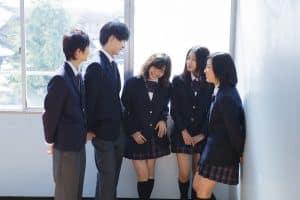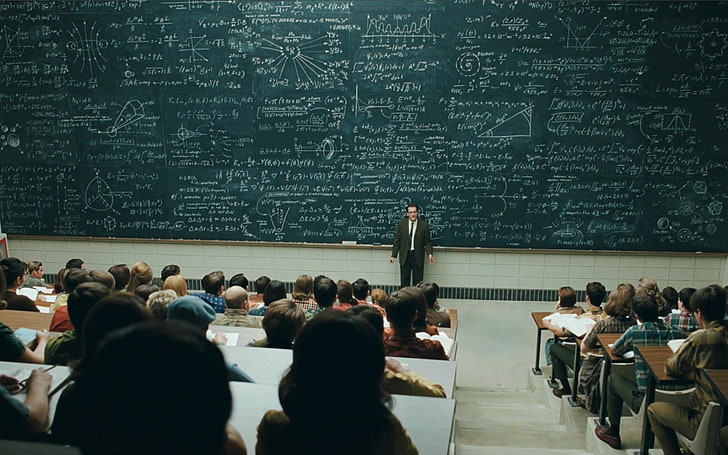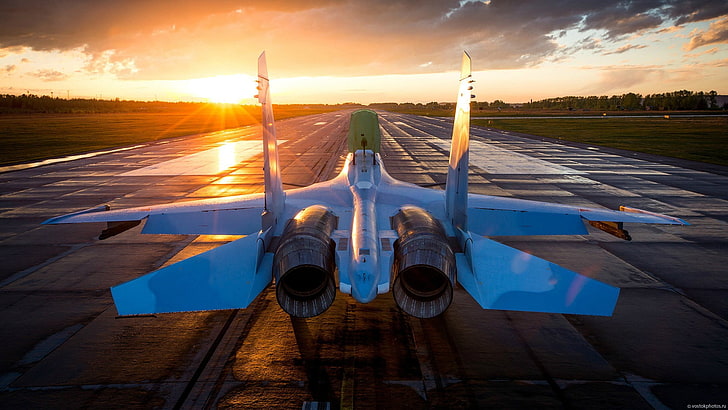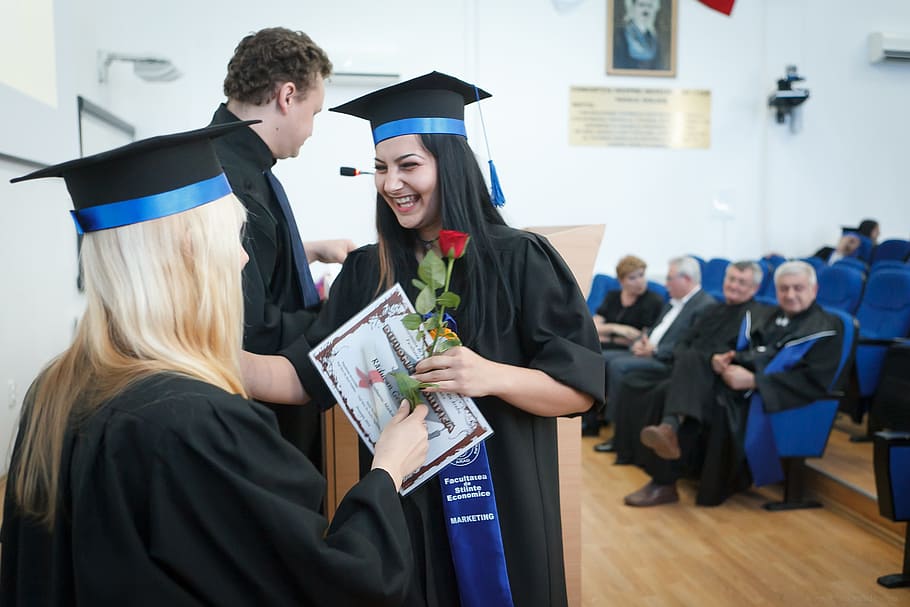Japanese High Schools admissions 2023
Japanese High Schools admissions 2023

Do you want to send your child to some of the best Japanese high schools but lack the necessary language abilities or information? Here are eleven Tokyo schools that accept international students and give enough linguistic and cultural support till graduation.
Also read: Churches that helps with Utility bills
Japan’s compulsory education finishes at the end of grade 9; thus, pupils who wish to continue their education must find their own place at a senior high school that is appropriate for them. Here are several options for international students who want to study in some of the best Japanese high schools.
In this post, we will not only outline some of the best Japanese high schools but also give you a general overview of the Japanese educational system.
How Do Japanese High Schools Work
Do you want your kid to study in Japan and are wondering about what high school is like, or do you want to learn about Japanese culture in high school?
Let us examine the lives of high school students in the Japanese public and private institutions.
Academic, vocational, and new comprehensive high schools are the three hierarchically ordered categories of high schools for high school pupils. Students in high school participate in extracurricular activities and work part-time after school. Almost two-thirds of high school graduates attend colleges or specialized training schools. Admission to higher education institutions, on the other hand, is not very rigorous. Only the top 20 to 30 percent of high school pupils are likely to work hard to get admission to elite schools. More than half of high school pupils only study for an hour or less every day.
The majority of the 5,450 Japanese high schools are public institutions governed by the prefectural board of education. In addition to 15 national high schools linked with national universities and 104 recently integrated six-year secondary institutions, about one-fourth (24%) of high schools are private (Monbukagakusho- 2004a).
Students with vision impairments, hearing impairments, physical disabilities, mental retardation, and/or chronic disease are served by special high schools for handicapped children.
Approximately 73% of high school students attend academic high schools to prepare for college. Vocational high schools enroll one-fourth of all high school pupils. Technical, commercial, and agricultural vocational high schools are the three types of vocational high schools. Comprehensive course programs, home economics, nursing, fishing, social welfare, information science, science, physical education, arts, music, international relations, and English are all offered at certain academic and vocational high schools.
As more 15-year-olds choose academic high schools, vocational high schools are losing pupils. In order to attract higher-achieving students, several vocational high schools are transitioning to comprehensive or academic high schools. Furthermore, as the number of high school students has decreased, several less popular high schools have closed or merged with other institutions. Because many students choose job training over attending low-ranked academic high schools, technical high schools and high school nursing programs have grown in popularity during the current economic downturn. ~
List Of Japanese High Schools
The following is a list of the best Japanese high schools that routinely accept international students.
1. Tokyo Metropolitan Kokusai High School
The Tokyo Metropolitan Kokusai High School, also known as Kokusai Koko, is the best public-international high school in the world. It claims to be among the top ten percent of Tokyo metropolitan high schools. Only one of the six schools intended for international students has a comprehensive English webpage.
Kokusai (the Japanese term for international) places an emphasis on developing students’ linguistic abilities and offers a wide range of language lessons, including French, German, Spanish, and others. Students can enroll in the program twice a year, in April and September. The school, which is located in Komaba, Meguro Ward, accepted 25 international students in April 2017 and around five in September. In addition, the school offers the International Baccalaureate Diploma Program, which is taught mostly in English. Each year, a maximum of 25 Japanese and international students are admitted to this program.
One of the school’s finest qualities is that it assists international students with unique Japanese courses and places them in all subjects (including math, science, and languages) based on their degree of ability. The school is quite international, having both returns and international students from all over the world.
2. Tokyo Metropolitan Asuka High School
Asuka High School is located in Oji, Kita Ward, and claims to have a greater teacher-to-student ratio than other schools, allowing it to conduct smaller courses segregated by aptitude in English, mathematics, and Japanese. It has two primary curriculum paths: foreign culture and art and life studies. Despite having a Japanese-language website solely, Asuka advertises itself as aggressively promoting international interaction, including a study trip to Australia in the second year. Out of an annual intake of roughly 130 pupils, the school typically admits 20 foreign residents in April and three in September.
3. Tokyo Metropolitan Fuchu Nishi High School
This school in Fuchu, west Tokyo, takes pride in its thorough training. It has short courses that are split according to the ability of the students and employs information and communication technology equipment to educate. The first-year curriculum emphasizes information technology, with the humanity and science stream beginning in the second year.
Fuchu Nishi had 15 spaces available for international students in its April admission for the 2017 school year and three in September.
4. Tokyo Metropolitan Minamikatsushika Senior High School
The Tokyo Metropolitan Minamikatsushika Senior High School typically takes 15 non-Japanese students in April and three in September. It offers short courses of 20-30 students in a variety of areas and splits mathematics and English sessions based on students’ aptitude. On Saturdays, it offers volunteer supplementary study courses. More information regarding the school’s enrollment criteria may be found here.
5. Tokyo Metropolitan Tagara High School
Tagara High School typically admits a total of 20 international students in April admissions, including six in general education and 14 in a foreign culture. In September, one additional non-Japanese student is admitted to the main course and two to the foreign culture course.
Tagara, which is located in Hikarigaoka, Nerima Ward, teaches Japanese customs and culture in the third year.
6. Tokyo Metropolitan Takenodai High School
This school is located in Higashi-Nippori, Arakawa Ward, and it typically takes 15 international students in April and three more in September for its general education course. It provides voluntary extra study courses after school, on Saturdays, and during vacation times, as well as a self-study space.
7. Kanto International Senior High School
Kanto International School is a co-educational, private high school with three study streams: general education, foreign studies, and performing arts. International students are only admitted to the general education stream’s Japanese culture course. Out of a total yearly intake of 360, it had opportunities for 20 students applying as either returnees or foreign residents for the 2017 school year.
Kanto International has been classified as a “Super English Language High School” by the ministry of education. This Japanese high school emphasizes English language studies and is entrusted with producing such a curriculum as well as doing practical research into forging successful collaboration links with junior high schools and universities.
Kanto International Senior High School is located in Shinjuku, had an entrance cost of 240,000 in 2017 and a monthly tuition charge of roughly 31,500, among other fees.
8. International Christian University High School
Another school that has easily made it to our top list of Japanese high schools is the International Christian University High School. This school is located on the campus of the International Christian University (ICU) in Koganei City, western Tokyo. It prides itself on being one of Japan’s finest private high schools.
International students make up more than 65 percent of the student body. Except for those taught by native English speakers, all classes are offered in Japanese. ICUHS has been recognized a “Super Global High School” under a government initiative aimed at developing leaders capable of playing active roles in the international arena.
ICUHS accepted applications for 80 first-year students in April 2017, including a limited number of overseas students. The 2016 school year’s costs comprised a 330,000 entry fee and a 591,000 yearly tuition price, among other things. There is also a dorm at ICUHS.
9. Keika Gakuen
This institute in Hakusan’s Bunkyo Ward has a junior and senior high school for males as well as a junior and senior high school for females. The boys’ school has 10 spaces vacant for international students in each of the junior and senior high sections at the start of the 2017 academic year. It also granted a limited number of slots between semesters under the returnees category, noting that nationality is not a concern, thereby opening that category up to international students.
Each of the girls’ schools intended to accept five pupils and a few others as returns during the school year, emphasizing that nationality would not be a problem. Among other fees, each institution charges a $250,000 entry fee and a monthly tuition rate of around $34,000.
10. Otsuma Tama Junior and Senior High School
Every year, a few spaces are made available to international students at this private girls’ school in Tama City, western Tokyo. Otsuma is a six-year high school that serves as both a junior and senior high school. As a result, its admissions procedure begins at the seventh-grade level. The junior high school years are devoted to developing fundamental academic skills, whereas the final three years are devoted to college preparation. For information about fees and applications, please contact the school directly.
Japanese High School Uniform

Japanese school uniforms are commonly seen in middle and high schools. Some private schools, however, may have Japanese school uniform regulations for primary students. School uniforms in Japan are available in two main styles. You may see either the classic or more contemporary kind of outfit. These uniforms are often blue, green, black, and white. The traditional Japanese uniform is based on Meiji formal dress and naval uniforms, offering a distinct look for both girls and boys.
For instance, the Sailor suit or sailor fuku is based on naval uniforms and was developed in the 1920s by Utako Shimoda. The garment was straightforward to create and was inspired by royal European children’s clothing. It is often made up of a:
- White blouse with short sleeves and a sailor collar
- A scarf, bowtie, or tie
- Skirt with pleating
- Socks in white, navy, or black
- Loafers in brown or black
The naval-style collar with the stripes and collar flap is what properly distinguishes this clothing. In the winter, females usually add a sweater to their clothing to keep warm.
Another popular Japanese boys’ school uniform is the Gakuran which was inspired by Prussian army uniforms and was part of a shift in patriotic Japanese society following World War I. The traditional Japanese costume consists of the following items:
- A high-collared coat in black or dark blue (with very visible gold or bronze buttons that run down the front)
- A white collared shirt.
- Slacks
- Brown or black leather loafers or shoes
Currently, most Japanese high school uniforms have gained a more contemporary look. While different schools’ uniforms may differ in style due to varied materials and design components, the uniform elements for a Japanese student are relatively similar.
Modern uniforms are comparable to western parochial uniforms. The contemporary uniform will comprise the following items:
- Blazer
- Trousers
- White shirt
- Tie
- Shoes in black leather
Some schools require pupils to wear a cap as part of their uniform.
Japanese Schooling System
The Japanese educational system comprises mostly six-year elementary schools, three-year junior high schools, and three-year high schools, followed by two-or three-year junior colleges or four-year colleges. Compulsory education lasts nine years, from elementary school through junior high school. School exchanges take place mostly in junior high and high schools during Japan Educational Travel. There is a system called “Special Needs Education” that helps physically or mentally challenged pupils to build self-reliance and thereby improve their social involvement.
What Time Do Schools Start In Japan?
A typical school day for a Japanese high schools student might begin at 6:30 a.m. or 7:00 a.m. Japanese high schools students do not drive to school in the same way that their American counterparts do. Many children must walk or bike to school if their house is not too far away.
Because the school day begins at 8:30 a.m. for these students, they can leave the house at 6:30 a.m. They’ll have to ride the bus or have their parents drive them to school. However, although some students sleep or study during their long trips, public transit allows them to mingle with their friends.
School standards frequently require kids to board buses and trains while leaving seats free for other passengers as a courtesy.
How Long Is Summer Break In Japan?
Japanese schools are divided into three semesters that are separated by holidays.
Summer break at most schools lasts 40 days, from July 20 to August 31; winter and spring vacations both last 10 days, from December 26 to approximately January 6 and March 25 to around April 5, respectively. The new academic year begins in April, at the conclusion of spring break.
Japanese School Schedule
In Japan, public schools are open five days a week, from Monday to Friday. Saturday sessions are also available at several schools. Each day in junior high and high school, there are six class periods, each lasting 50 minutes. Students clean the classrooms in shifts after school and then begin their club activities. There are several clubs available, including cultural and sporting clubs.
The academic year, in general, begins in April and concludes in March of the following year. The majority of institutions use a three-semester system, with the first semester running from April to August, the second semester running from September to December, and the third semester running from January to March. There is also a summer break (from the end of July to the end of August), a winter break (from the end of December to the beginning of January), and a spring break (from the end of March to the beginning of April) (from the end of March to the beginning of April).
Also read: Mike Rowe Scholarships
Japanese Grading System
In Japan, academic evaluation is quite systematic. Constant attention is drawn to the highs and lows of the candidates. The marking system is simple enough for parents to understand. When a student advances in his education, he is introduced to a more complex marking system.
In Japanese education, the performance-based grading system differs from school to school and university to university. The most typical style of grading is in percentages or grades such as A, B, C, D, and E. Each grade represents a certain percentage range.
In Japan, education consists of the following components:
- Elementary Level Education
- Secondary Education
- High School Education
All children in Japan are required to attend elementary school for six years and secondary school for three years. The exam pattern for elementary, secondary, and high school is nearly the same. However, until the intermediate level of schooling, i.e., secondary school, all pupils pass the test. In the same class, no pupils are failed or are kept behind. Regardless of how they fared in the examination or what grades they received, all pupils are promoted to the following class.
All academic activities and topics are taught to elementary and secondary school students, and all students are required to take an exam. Even if a student fails, they get advanced to the next class regardless of performance on the test or exam.
But, once again, every student must take all of the examinations seriously since they serve as a foundation for the next entrance exams, which they must pass to be accepted into a high school. Nowadays, parents are increasingly concerned about getting their children into reputable schools. They also send their children to private schools to prepare them for admission tests. Below is what a typical grading system in standard Japanese high schools will look like:
| Grade | Scale | Grade Description | US Grade | Notes |
| S | 90.00 – 100.00 | Exemplary | A | Rarely given |
| A | 90.00 – 100.00 | Exemplary | A | |
| A | 80.00 – 89.99 | Very Good | A | |
| B | 70.00 – 79.99 | Good | B | |
| C | 60.00 – 69.99 | Satisfactory | C | |
| F | 0.00 – 59.99 | Fail | F | |
| P | Pass | P |
The grading system for college or university students is based on five scales: A, S, B, C, and F. If a student fails any subject at the degree or postgraduate level, they must retake the test in the following semester.
Types of Japanese High Schools
In Japan, high schools are classified into one of three types:
1. Elite academic high schools attract the cream of the crop of students and send the vast majority of their graduates to top national universities.
2. Non-elite academic high schools officially educate students for less prestigious universities or junior colleges, but in practice send a considerable percentage of its pupils to private specialty schools that teach disciplines like bookkeeping, languages, and computer programming. These schools are part of the standard high school system.
3. Vocational High Schools, which include courses in business, technology, agriculture, home science, nursing, and fishing. Approximately 60% of their graduates go on to work full-time.
4. Correspondence High Schools provide a flexible type of instruction for 1.6 percent of high school students, mostly those who did not complete high school for a variety of reasons.
5. Evening High School, which used to provide lessons to underprivileged yet eager students who worked while striving to improve their academic standing. However, in recent years, such schools have tended to be attended by unmotivated members of the worst two percentiles in terms of academic attainment.
Is High School in Japan Free?
In Japan, high school is not required, and even public high schools charge fees. However, when compared to many of the other expenditures associated with educating their children, public high school tuition is a drop in the bucket. There are no entry tests or tuition costs in public primary and secondary institutions, and materials are provided for free.
How Much Does High School in Japan Cost?
According to the Ministry of Education, the typical public high school student paid 112,000 yen per year in school fees in 2006, which is unquestionably excessive for low-income households.
At the same time, the typical public high school student paid 176,000 yen per year for cram schools or juku.
In all, parents spend an average of 520,000 yen each year for their child’s education if he attends a public high school. This is almost half the cost of private high school students, who pay an average of 1,045,000 yen per year (including tuition of 785,000 and juku of 260,00).
On average, parents spend 2.76 million yen per kid for six years of elementary school if the child attends a public institution and 8 million yen if the child attends a private institution.
While there is no tuition for public elementary and intermediate schools, there are other supplementary charges. This includes lunch, which typically costs 40,000 a year, as well as kyoikuhi or “training expenses” for things like field excursions.
Additional materials (textbooks are provided for free) cost around 55,000 yen per year for elementary school and 130,000 yen for high school.
A public high school student generally spends 471,000 yen a year, while a private high school student spends 1,269,000 yen.




